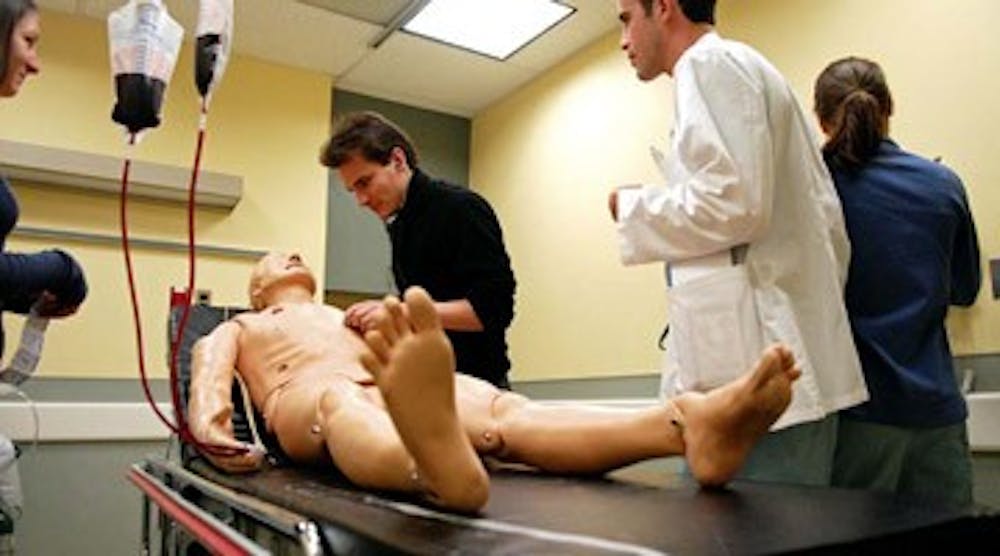
Last week, inexperienced medical students fumbled around in the emergency room, unable to locate IV bags or organize their efforts, as their patient's blood dripped to the floor.
Fortunately, although their patient "died" that afternoon, there was no family to inform - it was all just a simulation.
Medical students at Penn's School of Medicine are using advanced simulation technology to practice procedures before trying them on patients, and there are plans to expand the use of simulation this summer.
The School of Medicine is developing the state-of-the-art Measey Simulation Suite, which will open in June, equipped with an array of simulation mannequins used to train medical students, staff, and eventually, the public.
The "sim man" currently used at the Medical School - aptly named Ben - talks, breathes, bleeds, has a pulse and dies depending on the actions of the students and the severity of his condition.
Ben's voice is that of a doctor observing the students from behind a two-way mirror, and the gushing "blood" isn't real. But though the patient can be resurrected, students get a chance to complete all the tasks by themselves, in real time.
"This gives the students an opportunity to perform procedures that would be life threatening to do for the first time on a real patient," said Neal Gauger, a simulation specialist at HUP. "Now they can practice a procedure 100 times before they actually do it."
For further improvement, the students are videotaped and can see their performances after the simulation.
Simulation as a tool for medical education is becoming widespread, as most medical schools employ the technology in some form. But the Measey Suite will be vastly larger, equipped with mannequins with the ability to simulate procedures as complicated as laparoscopic surgeries.
"We will have the largest 'sim center' in the city, possibly on the whole east coast," said Gail Morrison, the vice dean for education at Penn's School of Medicine .
Mannequins cost between $1,000 and $200,000 each. Penn's most advanced mannequins cost about $40,000 now, but the Measey Suite will house mannequins in the most expensive price range.
The simulation center is being funded in large part by a $1 million grant from the Measey Foundation, which has donated to a number of Penn Medicine projects. The suite will be located at 18th and South streets.
Penn's current simulation center is used mostly by medical students specializing in surgery, anesthesiology and emergency medicine. But medical students will not be the only ones to reap the benefits of the new Measey Suite.
Initially, the site will be for Penn medical personnel wishing to improve their skills and practice complicated procedures. But after the first year of operation, the center will also be of use to the public for learning skills such as CPR.
The Daily Pennsylvanian is an independent, student-run newspaper. Please consider making a donation to support the coverage that shapes the University. Your generosity ensures a future of strong journalism at Penn.
DonatePlease note All comments are eligible for publication in The Daily Pennsylvanian.




